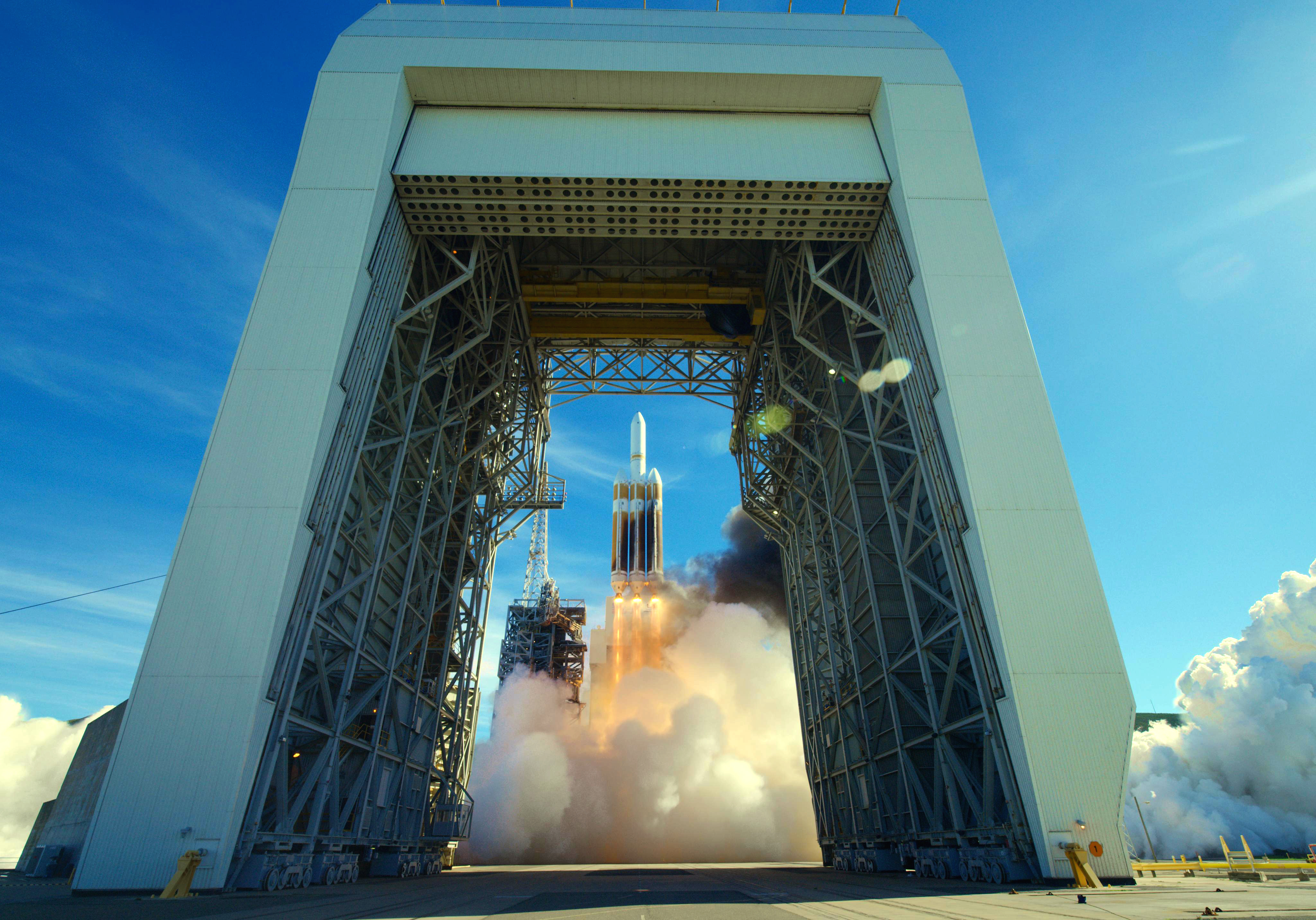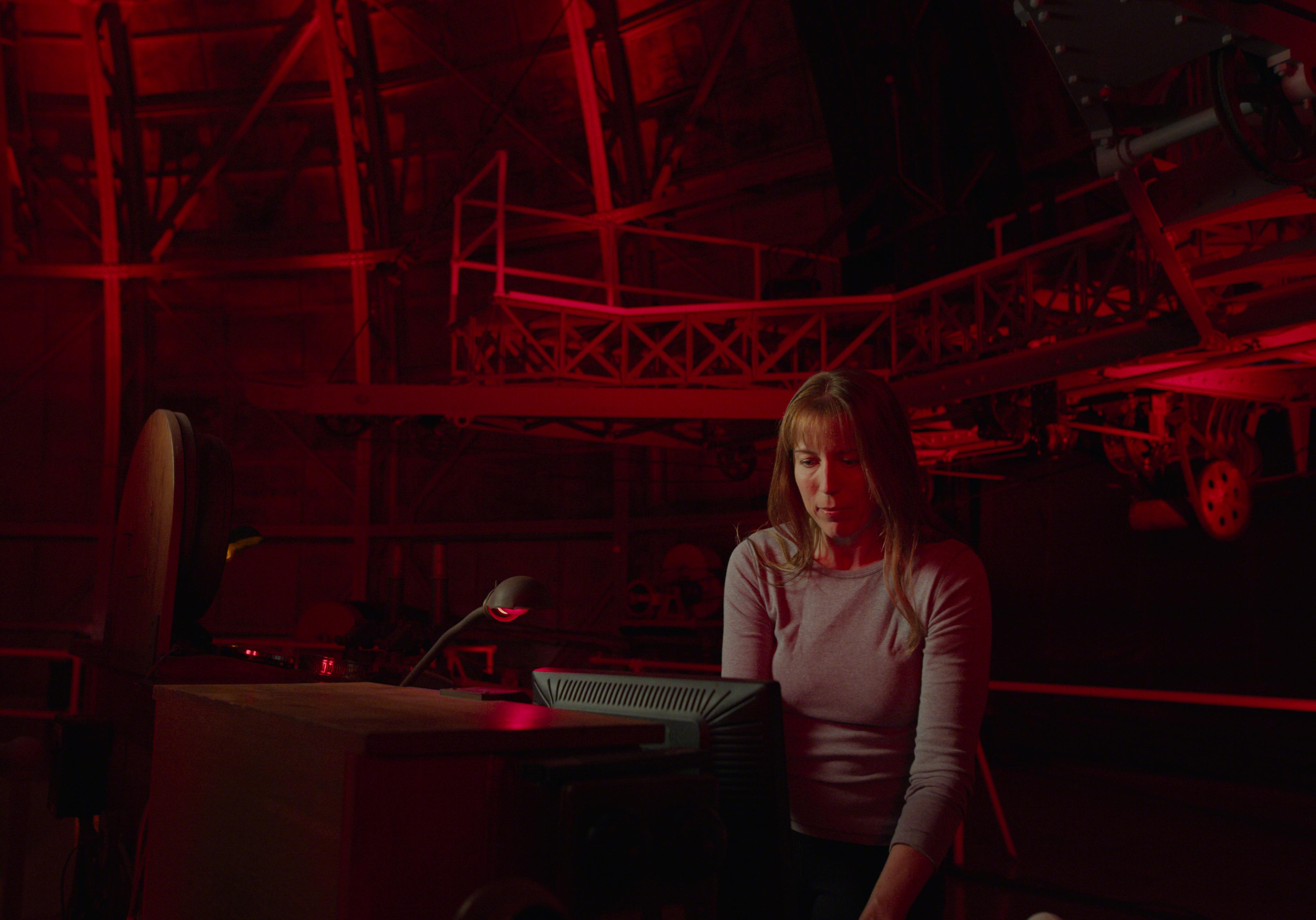'Asteroid Hunters,' inspired by an asteroid deflection mission, launches in IMAX today
Many years ago, long-time Hollywood film distributor Phil Groves saw a news story about asteroids that re-ignited his childhood interest in space.
Groves' passion for asteroids will soon come through on screen nationwide as his brand new documentary "Asteroid Hunters" launches in IMAX theaters. The film debuted at the Kennedy Space Center Tuesday (Oct. 6) and will launch coast-to-coast on Thursday (Oct. 8). Screenings may be available in other countries as well; check your local listings. "Star Wars" star Daisy Ridley (Rey) provides the film's narration, which is directed by W.D. Hogan ("Deadliest Warrior").
The spark of inspiration for "Asteroid Hunters" came from Groves' research into the joint NASA-European Space Agency's Asteroid Impact and Deflection Assessment (AIDA) mission. The mission shrunk in scope after Germany said it could not fund its portion, but the aim remains the same: to safely test asteroid deflection techniques far from our home planet.
Related: NASA Will Aim a DART at Target Asteroid in Upcoming Deflection Test

The current mission design calls for a NASA spacecraft called Double Asteroid Redirection Test (DART) to redirect the path of a small asteroid's moon in 2022. A follow-up ESA spacecraft called Hera will orbit the asteroid in 2027 and study the crater.
Groves said that he was dismayed the original mission did not move forward on time and with the originally-planned larger scope. That said, he added, the movie's purpose shows how asteroid deflection is quickly becoming science fact as opposed to science fiction. Also, moving a space rock is nothing like what was shown in the hit film "Armageddon," in which oil rig workers flew to a fictional asteroid to save the Earth.
"People in the streets, when I talk to them, they know that the asteroids are out there," Groves, who produced "Asteroid Hunters", told Space.com. "Armageddon" and "Deep Impact," another 1990s film, were often cited in his conversations. (Policymakers also paid attention, as in the 1990s, Congress directed NASA to find 90 percent of near Earth objects (NEOs) that are at least 0.6 miles or 1 kilometer in diameter — a goal NASA met in 2010).
Get the Space.com Newsletter
Breaking space news, the latest updates on rocket launches, skywatching events and more!





Groves said he wanted the public along with world leaders to know about the threat of asteroid impacts and what real-life scientists are doing to mitigate that risk. NASA is now trying to find 90 percent of all NEOs 460 feet (0.15 kilometers) and larger under a 2005 Congressional mandate. This was supposed to happen by 2020, but NASA determined in 2017 that a devoted space-based telescope (the James Webb Space Telescope, which hasn't been launched yet) would be needed to meet the timeline.
That said, ground telescopes (with the occasional assistance of space telescopes like the Hubble Space Telescope) regularly scan the skies to hunt for any potentially hazardous asteroids. While no imminent threats are known, the search continues. Engineers are also discussing how to deflect any asteroids posing an alarming threat to our planet.
Related: Images: Potentially Dangerous Asteroids
"One of the things the movie introduces is this notion of affecting the path of an asteroid," Groves said, adding that two of the deflection ideas discussed in the film are based on concepts that have attracted praise in scientific peer review. The "gravity tractor" method calls for gently moving a potentially hazardous asteroid off of colliding with Earth through using the gravitational tug of a robotic probe, a process that could take years or decades. A kinetic impactor like DART, on the other hand, would suddenly move the asteroid off course after a planned spacecraft collision.
"We actually show you [in the movie], in a live action simulation, the mitigation technique of sending up a nuke [nuclear weapon] to explode in the path of an asteroid," Groves explained. "In showing that sequence, we had one of the coolest moments of the making of the movie."
Groves and his crew visited Vandenberg Air Force Base to watch a Delta IV heavy-lift rocket launch to space. Such a rocket could be used, in theory, to send up a kinetic impactor for a future asteroid mission. The cameras were situated very close to the rocket, Groves recalled, so close that the protective glass in front of both cameras shattered. (Groves, who watched the launch from three miles or five kilometers away, joked that at this safer distance he didn't shatter.)
The film included scientific advice as well from NASA's Kelly Fast, a scientist who provided a perspective from the agency's Planetary Defense Coordination Office (PDCO), which was set up in 2016 to manage planetary defense activities at NASA and with other emergency agencies in the United States. Part of PDCO's work is gathering information on asteroids through a network of partner telescopes. It also runs simulated exercises for asteroid mitigation and at worst, evacuation of populated areas.
The filmmakers also received advice from Donald Yeomans, who is now retired but previously managed NASA's Near-Earth Objects program office, a predecessor entity to PDCO.
"The scientists are the real heroes," Groves said. "They are the ones watching our back. They are using the power of science, in a very real way, to develop these technologies which we have now. The fact we sent probes to several asteroids and even a comet to intercept them, shows that this [asteroid defense] is something we can do today."
Indeed, the past 20 years have seen a variety of comet and asteroid missions, and some of these are about to deliver samples of asteroids back to Earth. Japan's Hayabusa2 will rendezvous with our planet late this year to ferry a portion of asteroid Ryugu for more study. Meanwhile, NASA's OSIRIS-REx (Origins, Spectral Interpretation, Resource Identification, and Security-Regolith Explorer) is orbiting asteroid Bennu and preparing for its own sample collection later this month.
Another notable recent mission was ESA's Rosetta mission that watched Comet 67P/Churyumov–Gerasimenko as it drew closer to the sun, in part to better understand how outgassing on a small body could change its orbit and cause it to veer closer or further away from Earth. Meanwhile, NASA is gearing up for new asteroid missions Lucy and Psyche, which will gather more insight into these small worlds.
Another ongoing development is NASA's work to finally send up a space-based telescope devoted to studying asteroids. The Near-Earth Object Surveillance Mission is the current community-backed proposal, adapted from a previous mission concept called the Near-Earth Object Camera (NEOCam). NEOCam went through several rounds of proposals, but ultimately was not selected for launch.
"We need to have a sentinel out there watching asteroids go by us, and to do a better job at finding them," Groves said of the space telescope concept. "But they're working on it, because NASA has a space-based telescope that they are hoping to launch."
Groves added that he worked to make this science-heavy movie understandable to a wide audience, from eight years old to 80 years old. "I can't even spell Ph.D.," he joked. "But this movie will speak to all ages, and people of all scientific interests and backgrounds."
Follow Elizabeth Howell on Twitter @howellspace. Follow us on Twitter @Spacedotcom and on Facebook.
Join our Space Forums to keep talking space on the latest missions, night sky and more! And if you have a news tip, correction or comment, let us know at: community@space.com.

Elizabeth Howell (she/her), Ph.D., was a staff writer in the spaceflight channel between 2022 and 2024 specializing in Canadian space news. She was contributing writer for Space.com for 10 years from 2012 to 2024. Elizabeth's reporting includes multiple exclusives with the White House, leading world coverage about a lost-and-found space tomato on the International Space Station, witnessing five human spaceflight launches on two continents, flying parabolic, working inside a spacesuit, and participating in a simulated Mars mission. Her latest book, "Why Am I Taller?" (ECW Press, 2022) is co-written with astronaut Dave Williams.
